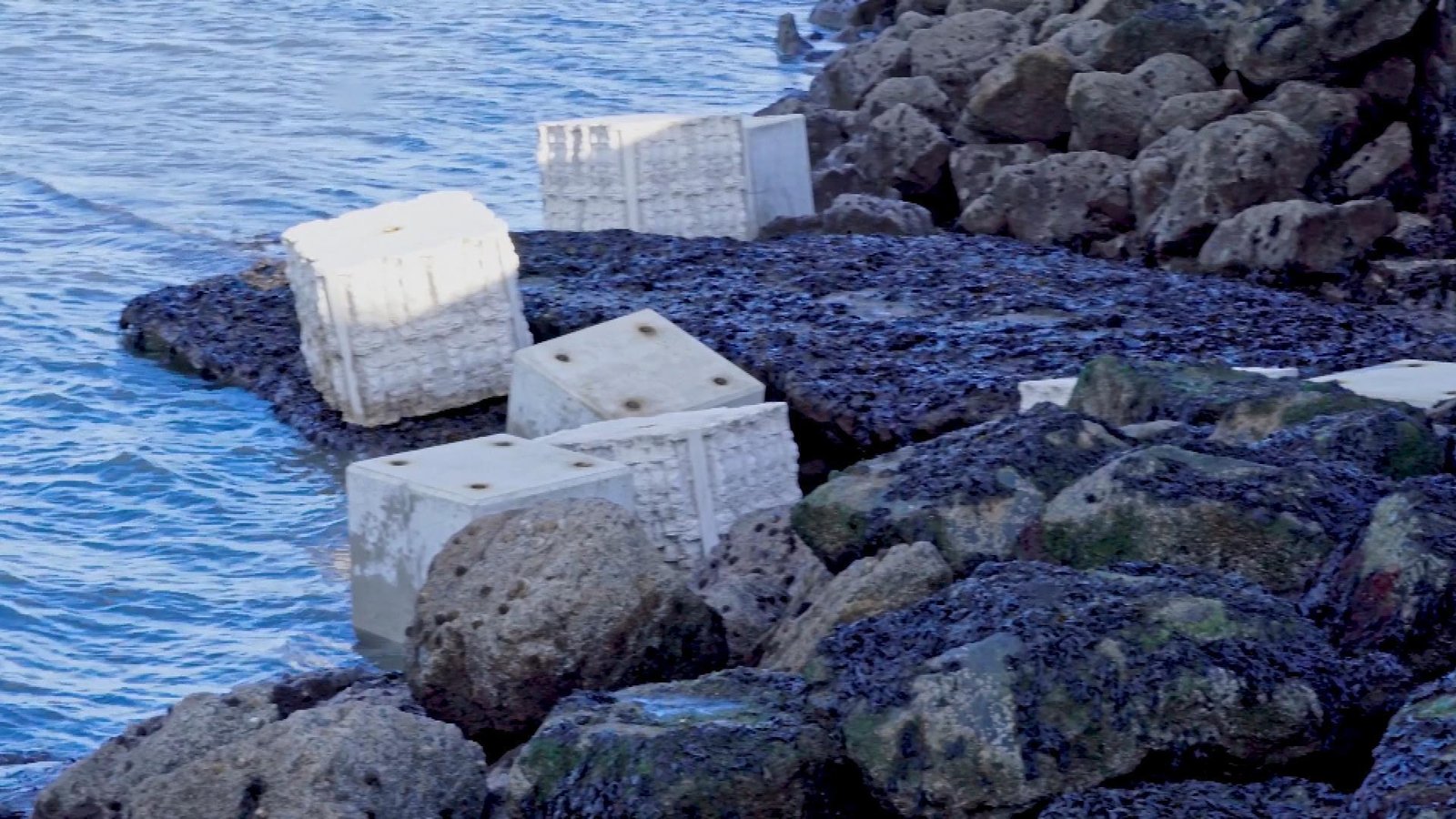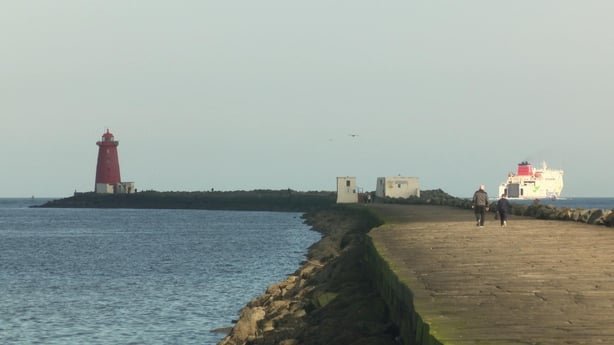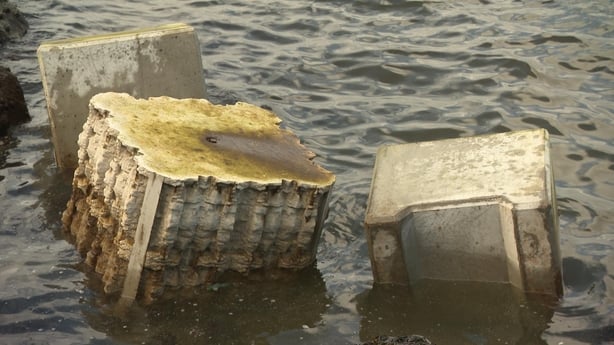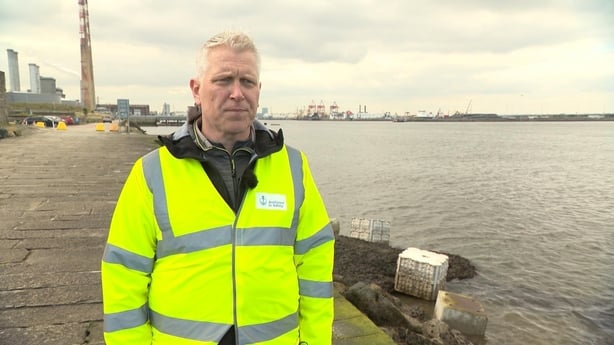‘World-first’ project to boost Dublin Port biodiversity

A series of massive concrete blocks imprinted with a mould of the rock face and topography of the shoreline of Ringaskiddy in Co Cork has been deposited along the Great South Wall in Dublin to boost Biodiversity and enhance the number of fish species in Dublin Port.
It follows a study of over 60 natural and artificial shorelines in Ireland and Wales to identify the best topography for the protection and promotion of biodiversity.
Natural and rocky shorelines tend to have lots of nooks and crannies that provide hiding places and protection for tiny aquatic creatures and algae from the environmental challenges caused by tides coming in and going out.
For example, when the tide goes out and the sun is up, smooth rock faces can dry out very quickly making it impossible for micro species needing moisture or a wet surface to survive.
This loss of microorganisms means less food for bigger species and fish resulting in a significant loss of biodiversity.
It is a phenomenon that is particularly relevant wherever there are man-made structures like seawalls and jetties protected from tidal erosion by lots of smooth boulders being deposited alongside them.
Believing that something could be done about this issue, researchers at University College Dublin studied 32 natural rocky shorelines and 32 artificial or man-made shorelines throughout Ireland and Wales to find which one might provide the best topographical protection for micro aquatic species.
Their conclusion was that the shape of the nooks and crannies along the shoreline of Ringaskiddy in Co Cork was best for biodiversity.

Now in a collaboration with the Dublin Port Company they have copied and imprinted the shapes and ridges they found in Ringaskiddy onto massive boulders that have been dropped into the sea along the Great South Wall in Dublin.
They will now monitor what organisms take up residence and survive on these Ringaskiddy-shaped boulders in Dublin Port over the next two years.
This is a world-first effort to prove that marine biodiversity can be enhanced by a marriage of eco-engineering and environmental sustainability.
Dublin’s Great South Wall was chosen as a strategic location for the installation of these experimental large habitat structures because it has significant potential to foster marine life.
Artificial structures such as seawalls and rock armour have long served as crucial protective measures for ports, harbours, and marinas worldwide.
If, as expected, this project is successful, then we could find the topography of the Ringaskiddy shoreline replicated on manmade structures all over the country at some point in the future to mitigate environmental impacts and to promote biodiversity and resilience.

The design of these habitat units draws from a comprehensive study conducted as part of the Eco Structure project, in which Dublin Port played a pivotal role on the stakeholder steering committee.
The UCD study of the rocky shores and artificial shoreline sites across Ireland and Wales involved advanced techniques such as photogrammetry. The project team crafted 3D models to inform the development of engineering-standard habitat units and wall panels.
Dr Paul Brooks, of UCD’s School of Biology and Environmental Science said “this represents a significant step forward in our understanding of eco-engineering concepts.”
He added: “By incorporating natural topographies into artificial structures, we have the potential to mitigate environmental impacts while promoting ecological resilience along the Great South Wall.
“This project has been seven years in the making and Dublin Port Company have been with us every step of the way. The result you can now see along the Great South Wall is a world-first and we’re very excited to see it finally come to the fore. It would not be possible without the collaboration with Dublin Port, and we hope that continues long into the future.”

Crucially, these habitat units integrate natural topography into eco-friendly concrete, reducing carbon footprint while maximising biodiversity potential.
Over the next two years, UCD researchers will conduct comprehensive monitoring to assess the efficacy of these habitat units in enhancing marine biodiversity.
By studying a diverse array of species, including invertebrates and fish, the project aims to unlock valuable insights into the benefits of large-scale eco-engineering approaches.
At nearly 5km long, Dublin’s Great South Wall was the longest seawall in the world when it was completed in 1731.
Though that title has since been taken by a seawall in South Korea, the Great South Wall remains one of the longest in Europe.
Eamon McElroy who is a Port Engineer at the Dublin Port Company, said:
“We have 8,000 ship arrivals every year, and as such, we must take great responsibility in looking after the environment around us. It is our policy to manage our obligations to the environment in a responsible manner and to take a sustainable approach to developing the port’s business.
“This project with UCD has been long in the making. The deployment of fish habitats along the Great South Wall, an iconic Dublin landmark, aims to enhance the biodiversity within the port estate itself. Through our joint efforts with UCD, we reaffirm our commitment to sustainable development and the preservation of marine ecosystems.”





